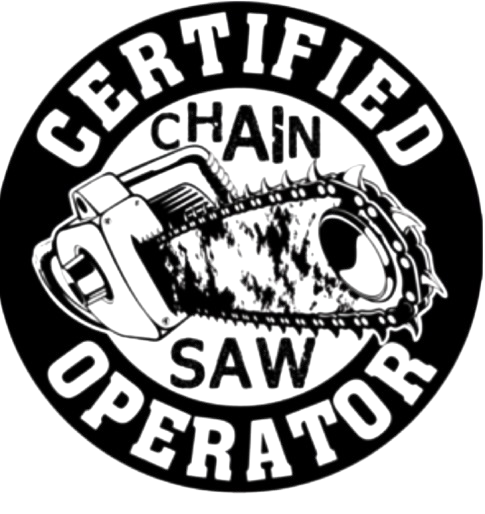Understanding Tree Removal Permits in Oklahoma: A Homeowner's Guide
Understanding Tree Removal Permits in Oklahoma: A Homeowner's Guide
Tree removal regulations in Oklahoma vary significantly by location, tree species, and circumstances. Understanding when permits are required protects homeowners from legal complications while ensuring proper environmental stewardship.
At Go Green Lawn & Tree Services, we help property owners navigate the complex regulatory landscape surrounding tree removal. Our experience with local, state, and federal requirements ensures your project complies with all applicable laws.
Before beginning any tree removal project, call (918) 407-0355 to discuss permit requirements and ensure full regulatory compliance.
State-Level Tree Protection Laws
Oklahoma generally allows property owners to remove trees on their private land without state permits. However, exceptions exist for protected species, trees in environmentally sensitive areas, and removal activities that affect public resources.
The Oklahoma Water Resources Board regulates tree removal in riparian zones near streams, rivers, and lakes. These areas provide critical erosion control and wildlife habitat, making unauthorized removal subject to significant penalties.
Heritage trees or specimens with historical significance may receive protection under state preservation programs. These designations typically require formal review processes before removal approval.
Municipal Ordinances and Local Requirements
Cities and towns throughout Oklahoma maintain their own tree ordinances with specific permit requirements. Larger municipalities like Tulsa and Oklahoma City have comprehensive programs, while smaller communities may have minimal regulations.
Common municipal requirements include permits for trees exceeding specific diameter thresholds, usually measured at breast height. These thresholds vary significantly, ranging from 6 inches to 24 inches depending on local priorities.
Property setback requirements often mandate permits for tree removal near public rights-of-way, even on private property. These regulations protect urban canopy coverage and maintain neighborhood character.
Federal Considerations
Federal involvement in tree removal typically occurs when projects affect wetlands, endangered species habitat, or federally regulated waterways. The Clean Water Act requires permits for activities in jurisdictional wetlands, including tree removal.
The Endangered Species Act may restrict tree removal in areas containing critical habitat for protected species. Professional environmental assessments can identify these potential conflicts before project initiation.
National Environmental Policy Act requirements apply to federal projects or those receiving federal funding. These projects require comprehensive environmental review including tree removal impacts.
Utility Coordination Requirements
Tree removal near power lines, gas lines, or other utilities requires coordination with relevant companies regardless of permit requirements. This coordination protects both workers and infrastructure while maintaining essential services.
Oklahoma's "Call Before You Dig" program requires notification before any excavation activities, including stump removal. This free service prevents accidental utility damage and ensures worker safety.
Professional tree removal services maintain relationships with utility companies and understand proper coordination procedures for safe removal near infrastructure.
Homeowner Association Restrictions
Many residential developments include homeowner association covenants that restrict tree removal beyond governmental requirements. These private agreements often require architectural review committee approval before tree removal.
Covenant restrictions may include species-specific protections, aesthetic considerations, or replacement requirements that exceed municipal standards. Violation of these agreements can result in fines or legal action.
Review your property's deed restrictions and homeowner association bylaws before planning tree removal projects. These private agreements are legally enforceable and may be more restrictive than public regulations.
Insurance and Liability Considerations
Proper permits and professional services provide legal protection if tree removal activities cause property damage or injury. Insurance companies may deny claims for damages resulting from unpermitted or improperly performed removal.
Professional tree services carry comprehensive liability insurance and understand permit requirements that protect both property owners and service providers from legal exposure.
Documentation of proper permits and professional service provides valuable evidence for insurance claims and legal proceedings should disputes arise.
Environmental Impact Assessment
Some jurisdictions require environmental impact assessments for large-scale tree removal projects. These studies evaluate effects on air quality, water resources, wildlife habitat, and community aesthetics.
Professional assessments identify potential mitigation measures that may satisfy regulatory requirements while allowing project approval. These measures might include replanting requirements, timing restrictions, or alternative removal methods.
Early environmental consultation prevents costly project delays and identifies compliance strategies that balance development needs with environmental protection.
Replacement and Mitigation Requirements
Many jurisdictions require tree replacement when removal permits are granted. Replacement ratios vary based on tree size, species, and location, with larger trees requiring multiple replacement plantings.
In-lieu fees allow property owners to contribute to municipal tree programs rather than planting replacement trees on their property. These programs often provide better long-term outcomes for urban forest health.
Our professional complete tree care services include guidance on replacement requirements and coordination with local programs to ensure full compliance.
Emergency Removal Exceptions
Emergency situations involving immediate safety hazards typically allow tree removal without prior permits. However, property owners must document emergency conditions and may need retroactive approval.
Storm damage, disease outbreaks, or structural failures that pose immediate risks to life or property generally qualify for emergency removal exceptions. Professional documentation helps establish legitimate emergency conditions.
Contact authorities promptly after emergency removal to initiate any required after-the-fact review processes. This proactive approach demonstrates good faith compliance efforts.
Navigate Oklahoma's tree removal regulations with confidence by choosing professional services that understand all applicable requirements. Contact Go Green Lawn & Tree Services at (918) 407-0355 for comprehensive permit guidance and fully compliant tree removal services that protect your investment and legal interests.
